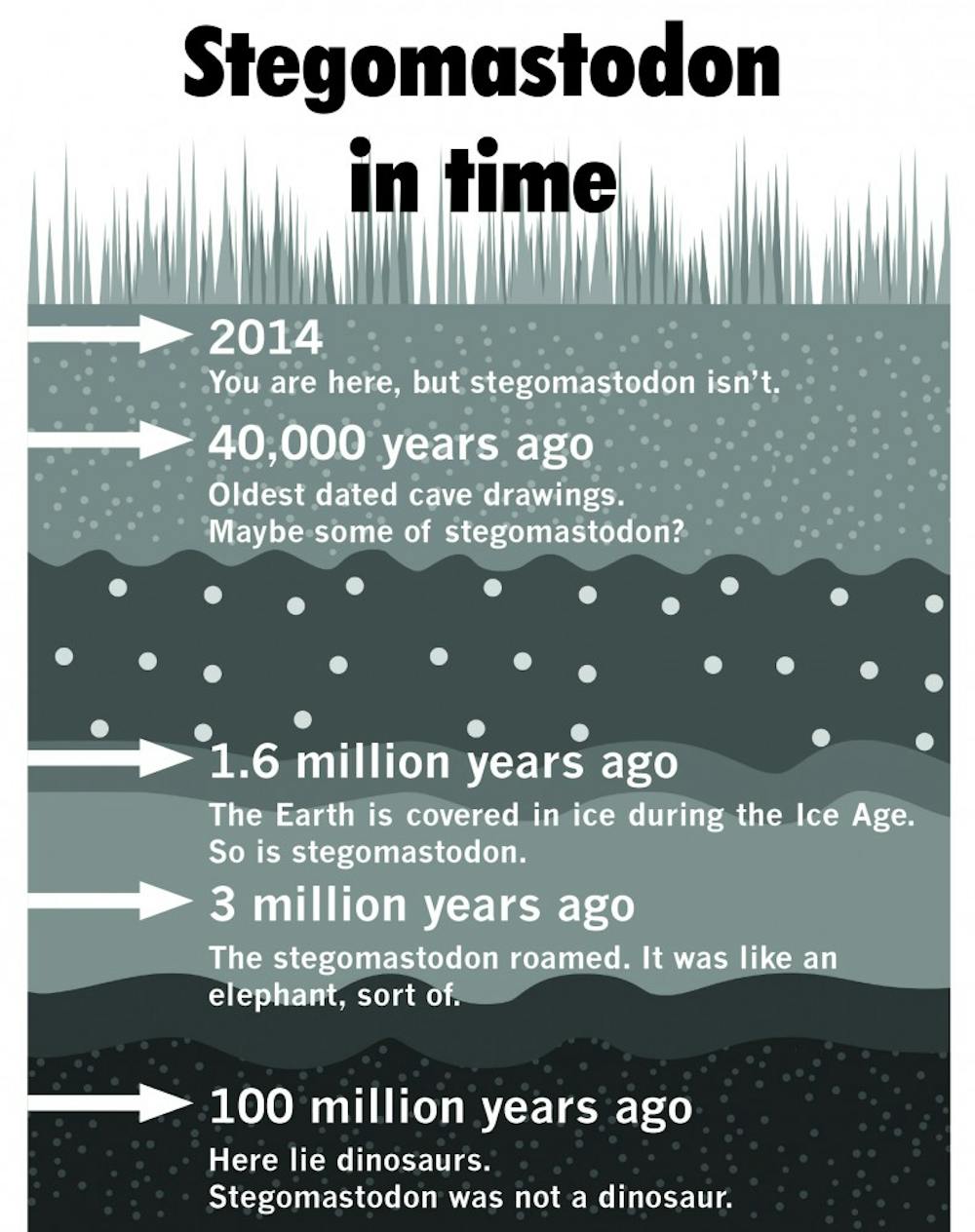News has traveled fast about the stegomastodon skull unearthed near Elephant Butte, but what no one knows yet is where the fossil will be displayed.
Randall Gann, public information officer for the New Mexico Museum of Natural History and Science, said the fossil has a long way to go before anyone can start thinking about its final home.
The perfectly preserved fossil is awaiting its turn in the preparation lab at the museum so it can go through the six-month preservation process. After, it will be studied by a paleontology team.
“It’s going to take over a year before it can be decided where it’s actually going to be on display,” Gann said, “but it will absolutely stay in New Mexico.”
However, he said his museum has an agreement with the New Mexico Bureau of Mines and Reclamation that states the museum is the official repository for things found on the bureau’s land, including where the stegomastodon head was found.
Gary Morgan, curator of paleontology at the museum, headed the expedition team that unearthed the stegomastodon.
“It requires a lot of work removing the rock and putting glue on before it can be studied or put on display,” Morgan said. “This is such a complete skull; we will study how it lived, what other elephants it might be related to and what it ate.”
The specimen is so well-preserved because it was likely quickly and completely covered with sediment shortly after its death. This protected and preserved it for more than 3 million years, he said. This makes it one of the most complete stegomastodon skulls discovered.
“There was nothing there but the skull and tusks,” said Morgan, who is also an associate at UNM’s Museum of Southwestern Biology. “The rest of the skeleton was lost, probably when the animal died. It may have been washed away in a storm or flood.”
There is very little known about this prehistoric elephant, so the skull will be important to the study of creatures native to New Mexico throughout the Pliocene and Holocene time periods, he said.
Beth Wojahn, public information officer for the New Mexico State Parks, said a group of campers were celebrating a bachelor party at the state park when they found a prehistoric elephant fossil on June 9.
The Elephant Butte Lake is a reservoir, and water was released from it on May 27, which is done once a year, causing the beach to recede several feet. This is believed to have revealed the mastodon skull and tusks, she said.
Get content from The Daily Lobo delivered to your inbox
“We’re thrilled about this amazing find in New Mexico State Parks history,” Wojahn said.
Gann said there are many areas in the state, including Elephant Butte, that are rich with fossils. If any are found, he said, the Natural History Museum should be contacted.
“We have an excellent staff of paleontologists at the museum,” Gann said. “With them and our support staff, we can handle just about any find that someone may find along the way. New Mexico is very rich in fossil beds.”
This stegomastodon fossil is just one of many fossils that have been uncovered at Elephant Butte Lake State Park in recent years, he said. These fossils have included pieces of other stegomastodon skulls, as well as the remains of a tyrannosaurus rex.
Katreena Kirkland is a freelance reporter for the Daily Lobo. She can be reached at culture@dailylobo.com.






